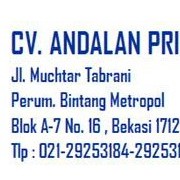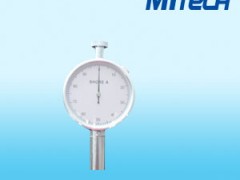Type A: applicable to general rubber, synthetic rubber, vulcanized rubber, soft rubber, leather, wax, etc.
Type C: applicable to the hardness test of rubber microporous material.
Type D: applicable to hard rubber, hard resin, acrylic, glass, cushiony plastic cement, printing plates, fiber, etc.
Ⅰ. Major performances
Shaw rubber hardness gauge is an apparatus to measure vulcanized rubber and plastic products. This apparatus has three models of Type A, Type C and Type D, and each model is subdivided into two types of single pointer and double pointer.
Type A and D respectively are applicable to the testing of low and medium hardness, and high-hardness materials.
Type C applies to the testing of microporous material which is used to make shoes, with compression rate 50 percent, stress 0.049 MPa or above, and this kind of material is made of rubber plastic and has blister in plastic.
Shaw rubber hardness gauge is an apparatus to measure vulcanized rubber and plastic products. This apparatus has three models of Type A, Type C and Type D, and each model is subdivided into two types of single pointer and double pointer.
Type A and D respectively are applicable to the testing of low and medium hardness, and high-hardness materials.
Type C applies to the testing of microporous material which is used to make shoes, with compression rate 50 percent, stress 0.049 MPa or above, and this kind of material is made of rubber plastic and has blister in plastic.
This hardness gauge conforms to the regulations of GB/T531-99, GB2411-80, hg/t2489-93, JJG304-2003.
Ⅱ. Main technical parameters
|
|
Type A
|
Type C
|
Type D
|
|
Calibration Value
|
0-100HA
|
0-100HC
|
0-100HD
|
|
Resolution
|
1HA
|
1HC
|
1HD
|
|
Pressure Head Size
|
Φ1.25mm
|
R2.5mm
|
Φ1.25mm
|
|
End pressure of Pressure Head
|
0.55N-8.06N
|
0.55N-8.06N
|
0-44.5N
|
|
Pressure Needle Range
|
0-2.5mm
|
||
|
Apparatus Weight
|
0.3kg
|
||
Ⅲ. Using methods
When using single pointer models, one should place the sample in the solid plane, hold the hardness gauge, keep the pressure needle at a distance of at least 12 mm from the edge of the sample, smooth enough pressure in the pressure on the sample, and smoothly press on the sample to a full extent. One should press the pressure needle vertically to the sample, and until pressed to a full extent and contact the sample completely, then read the calibration value within one second.
At measuring points which are at least 6 mm away from each other, measure hardness values for five times, and calculate the average value(for microporous material, the distance between the measuring points should be at least 15 mm). In order to keep the stability of conditions and improve the accuracy of determination, one should install the hardness gauge on the same type of the measuring shelf from a complete production network. When using double pointer models to do measurement, one should rotate the supporting pointer to the wax, etc.
Ⅳ. Using instructions
Before using, check whether the pointer of the hardness gauge points at zero position in a free state (if the point deviates from the zero position slightly, one can loosen the clamping screw at the upper right corner, rotate the gauge plate to make the pointer direct just against the zero position).
Place the hardness gauge on glass plate, and the pointer should direct at a 100 degree angle (the end of pressure needle and the bottom surface of pressure foot should be closely in contact with the glass surface) If the pointer doesn’t point to the zero position or at a 100 degree angle, one can activate the pressure needle for several times, and if the pointer still doesn’t point to the zero position or at a 100 degree angle, it can not be used. If the hardness gauge is used on the shelf of fixed weight, one can lift the hand grip in order to make the pressure needle pressed to a full extent and contact the testing board completely under the action of gravity of weights. If at that moment the pointer directs at a 100±1 degree angle, it cannot be used, either. It’s better to send it back to the factory for adjustment.
When one holds D type hardness gauge to check zero position or place it on the shelf of fixed burden to readjust the pointer to zero position, one should put special block under the pressure foot of hardness gauge, otherwise the pressure head of hardness gauge will damage the glass board, and moreover it is hard to show the correct value. For the specific operating method of block, one could refer to the special instruction manual.
Rubber sample shall be prepared according to the requirements of GB/T631-99; plastic sample shall be measured after being adjusted according to GB2411-80 regulations under the standard resolution in the laboratory. When measuring the sample, A-type hardness gauge’s value is more than 90 degrees, it is recommended that one should use D-type hardness gauge. When using D-type hardness gauge, the value is below 20 degrees, it is recommended that one should use A-type hardness gauge. When A-type hardness gauge’s value is 10 degrees, it is not accurate, and the measurement result can not be used. After complete using the hardness gauge, it should be wiped clean and put into the device box, and stored in dry place to prevent damp. The measurement shelf should be wiped frequently and be coated with a little anti-rust oil to prevent it from rusting, moreover add No. 20 oil to the flexible parts. Hardness gauge should be sent to inspection regularly according to the regulations of JJG304-89.
Provided that the user abides by the conditions of product maintenance and application, and the product can not normally work due to the manufacturing fault within 6 months since the day of purchase, our company will repair or change the product for free.


